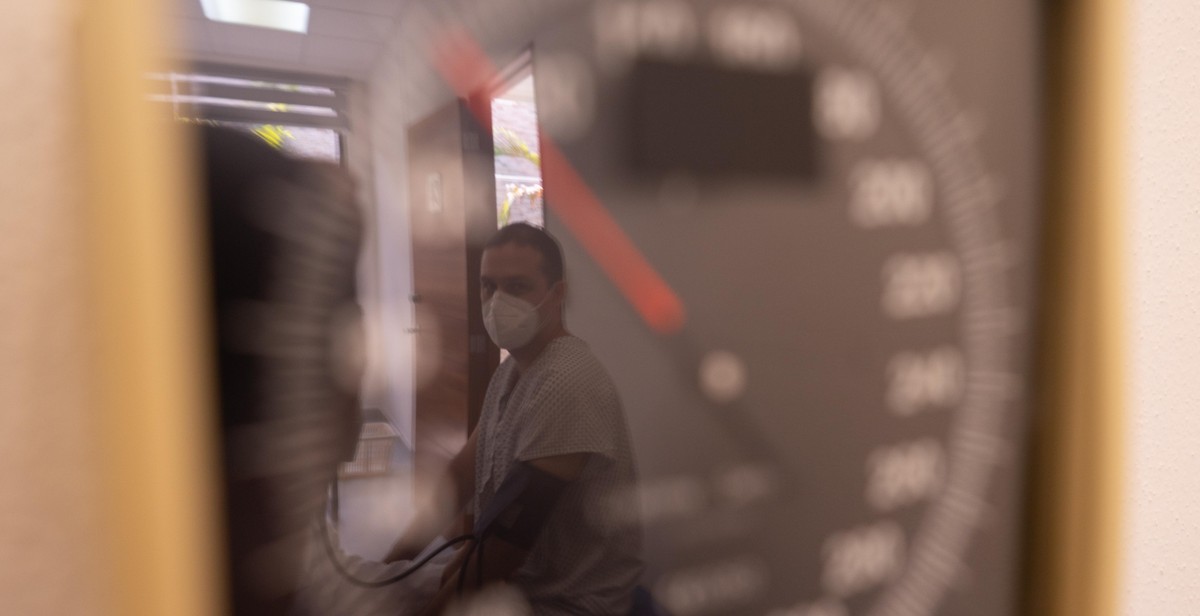How to Improve Patient Experience in Healthcare: Enhancing Satisfaction and Care Quality
As a healthcare professional with years of experience, I have witnessed firsthand the importance of patient experience in delivering quality care. Patient experience refers to the sum of all interactions between a patient and a healthcare provider, including the physical environment, communication, and the overall quality of care. Improving the patient experience is crucial for maintaining patient satisfaction, building trust, and ensuring positive health outcomes.
Why is Patient Experience Important?
Patient experience is directly linked to patient satisfaction, which in turn is linked to better health outcomes and lower healthcare costs. Satisfied patients are more likely to follow through with treatment plans, adhere to medication regimens, and maintain regular appointments. They are also more likely to recommend their healthcare provider to others, leading to increased patient volume and revenue for healthcare facilities.
How to Enhance Patient Experience
Improving patient experience requires a multi-faceted approach that involves addressing all aspects of the patient-provider interaction. This includes improving communication, providing a comfortable physical environment, and ensuring timely and effective care.
- Effective communication: Healthcare providers should actively listen to patients, provide clear explanations of diagnoses and treatment plans, and encourage patients to ask questions.
- Comfortable environment: Patients should feel comfortable and safe in the physical environment, including access to amenities such as clean bathrooms and comfortable waiting areas.
- Timely and effective care: Patients should receive timely and effective care that meets their individual needs.
By focusing on these key areas, healthcare providers can improve patient experience and ultimately deliver higher quality care.

Understanding Patient Experience
Patient experience refers to the sum of all interactions that a patient has with a healthcare provider or facility. It includes everything from scheduling appointments, receiving medical treatment, and communicating with healthcare professionals to billing and follow-up care. Patient experience is a critical component of healthcare delivery as it affects the overall satisfaction of patients and their perception of the quality of care received.
Why is Patient Experience Important?
Improving patient experience is important for several reasons. Firstly, it is an indicator of the quality of care provided by healthcare providers and facilities. A positive patient experience is associated with better clinical outcomes, increased patient satisfaction, and improved patient engagement in their own healthcare.
Secondly, patient experience is closely linked to patient loyalty and retention. Patients who have a positive experience are more likely to return to the same healthcare provider or facility and recommend it to others. This can help to improve the reputation of the healthcare provider or facility and attract new patients.
Factors that Affect Patient Experience
Several factors can affect patient experience, including:
- Communication: Effective communication between healthcare providers and patients is essential for a positive patient experience. Healthcare providers should communicate clearly, listen actively, and respond promptly to patients’ needs and concerns.
- Access to Care: Patients should be able to access care easily and conveniently. This includes scheduling appointments, receiving timely medical treatment, and having access to follow-up care.
- Environment: The physical environment of a healthcare facility can affect patient experience. Patients should feel comfortable and safe in their surroundings.
- Staff Attitude: The attitude of healthcare staff towards patients can greatly impact patient experience. Staff should be friendly, empathetic, and compassionate towards patients.
- Quality of Care: The quality of medical treatment received by patients is a crucial factor in their overall experience. Patients should receive evidence-based, high-quality care that is tailored to their individual needs.
| Factors that Affect Patient Experience | Description |
|---|---|
| Communication | Effective communication between healthcare providers and patients is essential for a positive patient experience. |
| Access to Care | Patients should be able to access care easily and conveniently. |
| Environment | The physical environment of a healthcare facility can affect patient experience. |
| Staff Attitude | The attitude of healthcare staff towards patients can greatly impact patient experience. |
| Quality of Care | The quality of medical treatment received by patients is a crucial factor in their overall experience. |
Overall, patient experience is a critical component of healthcare delivery that affects the overall satisfaction of patients and their perception of the quality of care received. By understanding the factors that affect patient experience, healthcare providers and facilities can take steps to improve it and enhance the overall quality of care provided.

Ways to Improve Patient Experience
Improving patient experience is crucial for healthcare providers to enhance satisfaction and care quality. Here are some effective ways to improve patient experience:
Effective Communication
Effective communication between healthcare providers and patients is essential for improving patient experience. Healthcare providers should communicate in a way that is easy to understand, empathetic, and respectful. They should also actively listen to patients’ concerns and respond appropriately. Patients should feel comfortable asking questions and expressing their concerns without fear of judgment or retribution.
Reducing Wait Times
Long wait times can be frustrating and stressful for patients. Healthcare providers should implement strategies to reduce wait times, such as optimizing scheduling, streamlining check-in procedures, and improving workflow. Patients should be informed about wait times and given updates if there are any delays.
Creating a Comfortable Environment
A comfortable and welcoming environment can help patients feel at ease and improve their overall experience. Healthcare providers should ensure that waiting areas are clean, well-lit, and equipped with comfortable seating. They should also provide amenities such as water, reading materials, and Wi-Fi. Patients should feel safe and secure while receiving care.
Providing Education and Resources
Providing patients with education and resources can help them better understand their health conditions and treatments. Healthcare providers should provide educational materials, such as brochures and videos, and recommend reliable online resources. They should also ensure that patients understand their medications and treatment plans.
Empowering Patients
Empowering patients to take an active role in their healthcare can improve their experience and outcomes. Healthcare providers should involve patients in decision-making and treatment planning. They should also encourage patients to ask questions and provide feedback. Patients should feel like partners in their healthcare journey.
| Strategy | Description |
|---|---|
| Effective Communication | Communicate in a way that is easy to understand, empathetic, and respectful. Actively listen to patients’ concerns and respond appropriately. |
| Reducing Wait Times | Implement strategies to reduce wait times, such as optimizing scheduling, streamlining check-in procedures, and improving workflow. Keep patients informed about wait times. |
| Creating a Comfortable Environment | Ensure that waiting areas are clean, well-lit, and equipped with comfortable seating. Provide amenities such as water, reading materials, and Wi-Fi. Ensure that patients feel safe and secure. |
| Providing Education and Resources | Provide patients with educational materials, recommend reliable online resources, and ensure that patients understand their medications and treatment plans. |
| Empowering Patients | Involve patients in decision-making and treatment planning. Encourage patients to ask questions and provide feedback. Ensure that patients feel like partners in their healthcare journey. |

Measuring Patient Experience
Measuring patient experience is an essential part of improving healthcare services. It helps healthcare providers understand how patients perceive the care they receive and identify areas that need improvement. Here are some methods that healthcare providers use to measure patient experience:
Patient Satisfaction Surveys
Patient satisfaction surveys are questionnaires that healthcare providers use to gather feedback from patients about their experience with the healthcare system. These surveys typically ask patients about their experience with different aspects of care, such as communication with healthcare providers, wait times, and the quality of care received. Healthcare providers use the results of these surveys to identify areas for improvement and to track changes in patient satisfaction over time.
Net Promoter Score
The Net Promoter Score (NPS) is a metric that healthcare providers use to measure patient loyalty and satisfaction. The NPS asks patients how likely they are to recommend the healthcare provider to friends and family on a scale of 0 to 10. Patients who score 9 or 10 are considered promoters, while patients who score 0 to 6 are considered detractors. The NPS is calculated by subtracting the percentage of detractors from the percentage of promoters. Healthcare providers use the NPS to identify areas for improvement and to track changes in patient loyalty over time.
Patient Complaints and Feedback
Patient complaints and feedback are valuable sources of information for healthcare providers. Patients who are dissatisfied with their care are more likely to complain, and healthcare providers can use these complaints to identify areas that need improvement. Healthcare providers should encourage patients to provide feedback and complaints through multiple channels, such as online surveys, suggestion boxes, and complaint hotlines. Healthcare providers should also take steps to address patient complaints and provide timely responses to patients.
Summary
Measuring patient experience is an essential part of improving healthcare services. Healthcare providers use methods such as patient satisfaction surveys, the Net Promoter Score, and patient complaints and feedback to gather information about patient experience. By using these methods, healthcare providers can identify areas for improvement and provide better care to patients.

Conclusion
Improving patient experience is crucial for healthcare providers, as it leads to better satisfaction and care quality. By listening to patients, providing clear communication, and implementing strategies to enhance their overall experience, healthcare professionals can make a significant impact on patient outcomes.
One of the most effective ways to improve patient experience is by implementing technology solutions that streamline administrative tasks and improve communication between patients and healthcare providers. Additionally, providing patients with access to online resources and educational materials can help them better understand their conditions and treatment options.
It is also important for healthcare providers to focus on creating a positive and welcoming environment for patients. This can be achieved through the use of comfortable waiting areas, friendly staff, and personalized care plans that consider the unique needs of each patient.
By prioritizing patient experience and implementing strategies to enhance satisfaction and care quality, healthcare providers can not only improve patient outcomes but also increase patient loyalty and referrals. In a highly competitive healthcare market, this can make all the difference in the success of a healthcare organization.
| Key Takeaways |
|---|
| • Improving patient experience leads to better satisfaction and care quality |
| • Technology solutions can streamline administrative tasks and improve communication |
| • Creating a positive and welcoming environment is crucial for patient satisfaction |
| • Prioritizing patient experience can increase patient loyalty and referrals |
